SNB commented on exchange rate in its latest Quarterly Bulletin. Here are the quotes from section 5.4.
Swiss franc gains against US dollar
Since the monetary policy assessment in December 2017, the Swiss franc has gained in value against the US dollar by around 4% (cf. chart 5.4). This appreciation occurred against a backdrop of general US dollar weakness, which became more pronounced at the end of January following statements by the US Treasury Secretary about the advantages of a weak US dollar for the American economy. At times, the USD/CHF exchange rate declined to its lowest level since mid-2015. 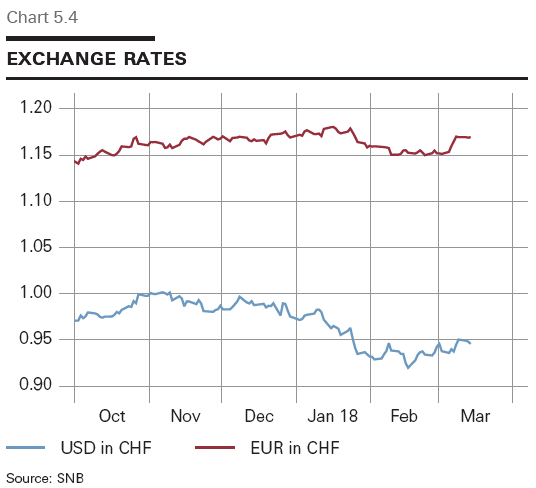
Fluctuations in Swiss franc exchange rate to euro
Initially, the Swiss franc depreciated somewhat against the euro. At times in mid-January, the price of the euro was CHF 1.18, the highest value since the discontinuation of the minimum exchange rate. Thereafter, however, the Swiss franc strengthened again. This appreciation occurred against a backdrop of growing market uncertainty, which was also reflected in share price performance. In mid-March, one euro cost CHF 1.17, which was practically the same level as at the time of the monetary policy assessment in December.
Slight increase in Swiss franc’s trade-weighted external value
On a nominal trade-weighted basis, the Swiss franc has increased by more than 1% since mid-December (cf. chart 5.5). This was mainly due to its marked appreciation against the US dollar.
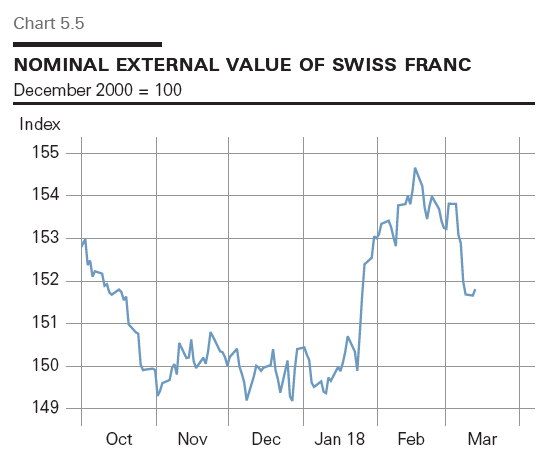 Real external value of Swiss franc still at a high level
Real external value of Swiss franc still at a high level
Since autumn 2017, the real trade-weighted exchange rate index calculated by the SNB has been at roughly the same level as before the discontinuation of the minimum exchange rate. It thereby remains above its long-term average. The same is true for the indices calculated by the Bank for International Settlements (BIS) and the International Monetary Fund (IMF) (cf. chart 5.6).
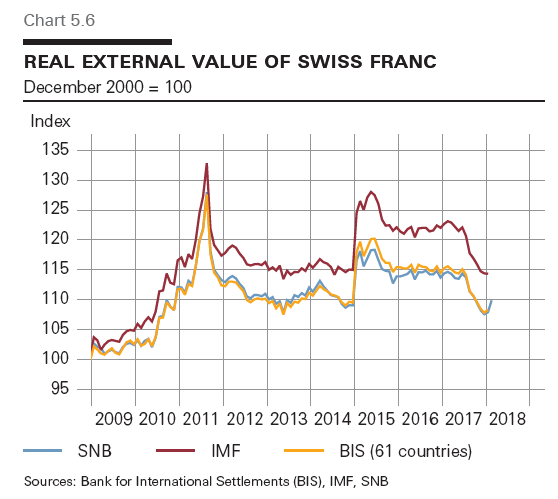 Full report here
Full report here
Basically, there is no indication for a change of SNB’s stance on exchange rate. Swiss Franc remains overvalued. And it will stand ready to intervenue if needed.




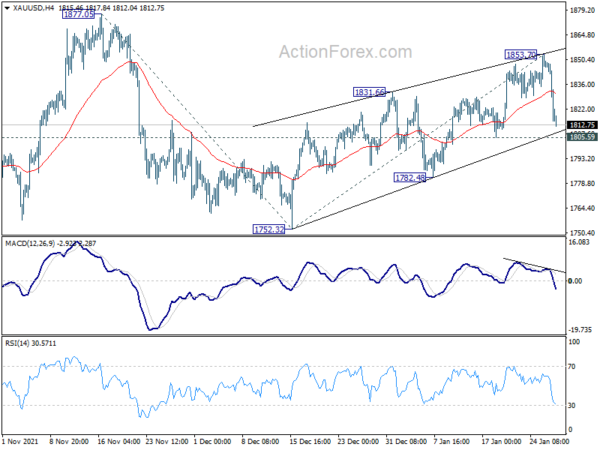
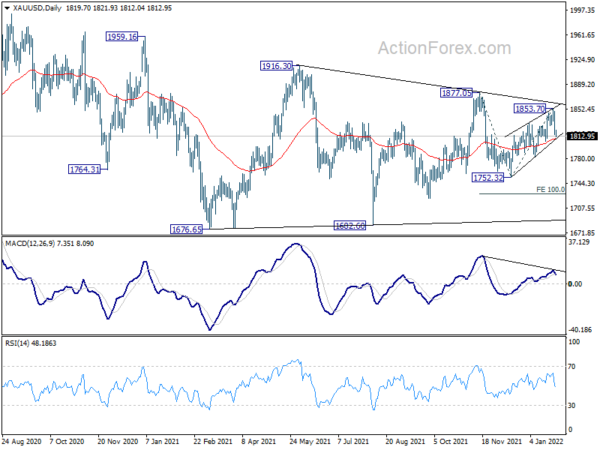
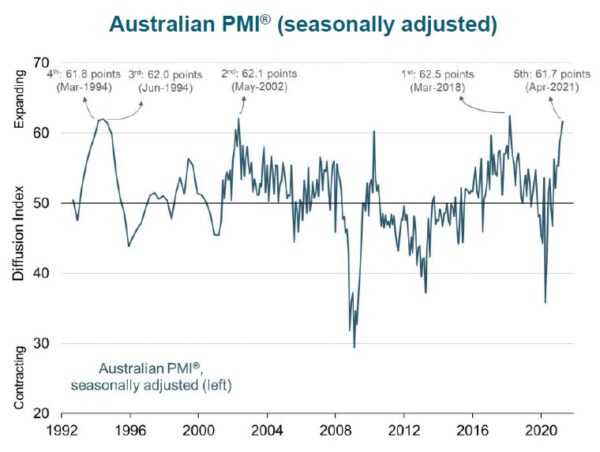
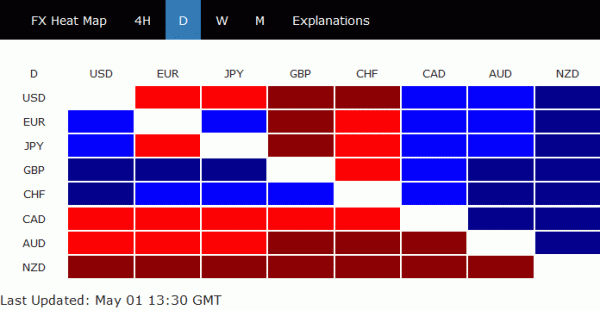



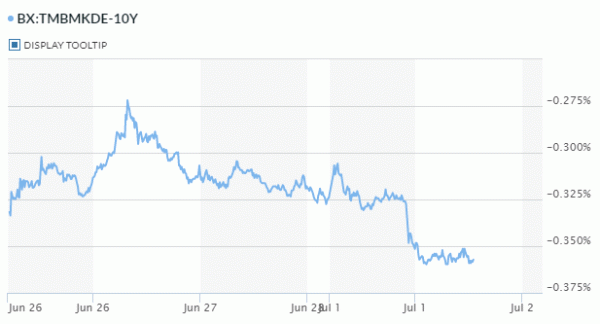
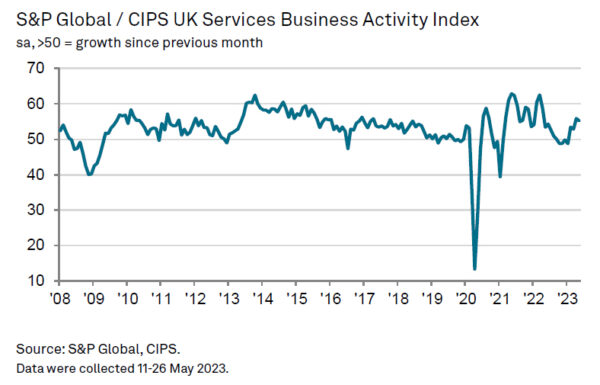
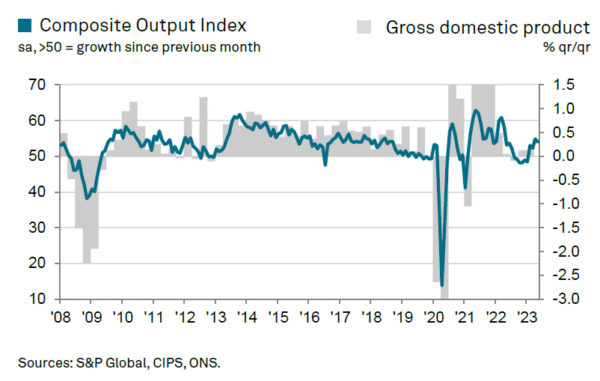
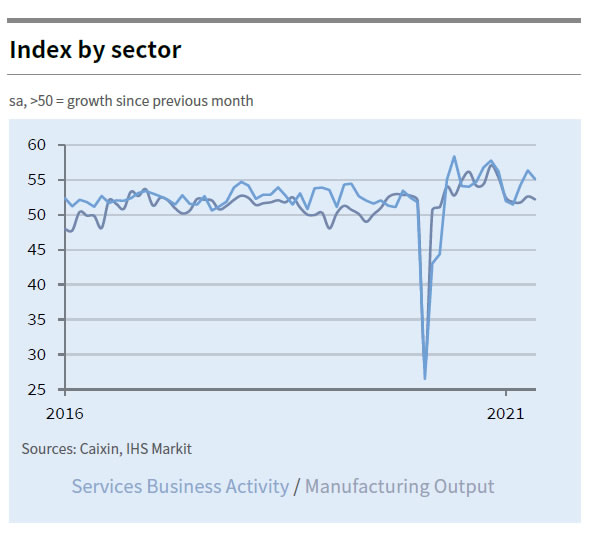
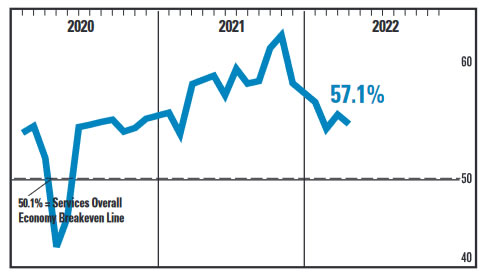

US consumer confidence fell to 102.6, third month of decline
Conference Board’s Consumer Confidence Index in the US recorded a dip in October 2023, falling from 104.3 to 102.6, though it managed to beat the anticipated 100.4. This decline marks the third consecutive month where consumer confidence has waned. Breaking it down further, Present Situation Index saw a decrease from 146.2 to 143.1, while Expectations Index also experienced a slight drop, moving from 76.4 to 75.6.
Dana Peterson, Chief Economist at Conference Board, highlighted, “Consumer confidence fell again in October 2023, marking three consecutive months of decline.” This drop in confidence reflects concerns in both the present economic conditions and future expectations.
One of the primary worries for consumers remains the rising prices, particularly noticeable in groceries and gasoline. These increasing costs continue to be a major concern, influencing overall consumer sentiment.
In addition to economic factors, political uncertainty and escalating interest rates have also contributed to the decline in confidence. Furthermore, increasing tensions and unrest in the Middle East have heightened worries around war and conflicts, adding another layer of apprehension among consumers.
Full US consumer confidence release here.